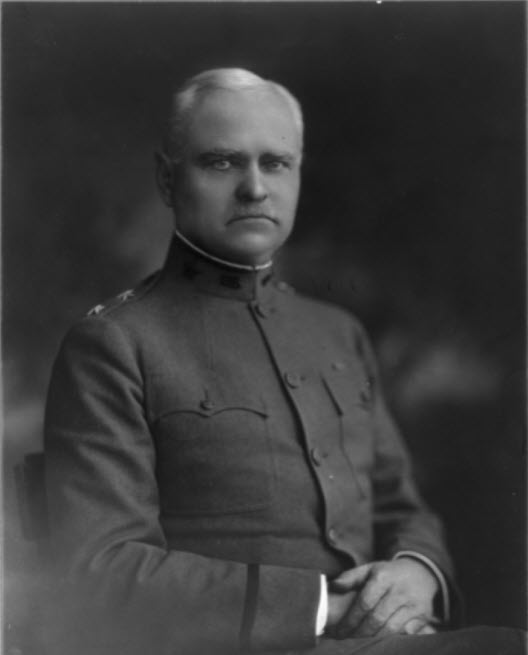After seven years’ work, George Washington Goethals finished the Panama Canal in 1914, completing a task that stymied two other engineers. He commenced his first real engineering work as a lieutenant at the Vancouver Barracks, and performed many routine duties, including planning the headquarters building, designing the new post cemetery, mapping telegraph lines and creating tables marking the distances between Department of the Columbia posts. This photo was taken before his death in 1928. (Contributed by Library of Congress)
Maybe his middle name, Washington, foretold George W. Goethals’ (1858-1928) assignment to the Vancouver Barracks during 1882-1884. As the sole engineer under ill-tempered Brig. Gen. Nelson Miles, district commander, he was expected to be the Columbia District’s engineering mastermind. The recent West Point graduate faced large swaths of unmapped land to explore and reconnoiter. Besides surveying and mapping, Goethals also gained civil engineering experience.
Miles assigned Goethals to explore the area from old Fort Colville to Lake Osoyoos on the Canadian boundary. The general ordered a wagon road connecting the two completed in a month because Gen. William Tecumseh Sherman was scheduled to tour the Northwest, and when he did, the road would become permanent. Knowing native trails were the shortest paths, Goethals and his crew interviewed Indigenous peoples before settling on a route.
In July, the Sherman party arrived at Fort Coeur d’Alene to tour the area Goethals and his crew explored. Showing confidence in the engineer, Miles ordered him to escort the Sherman party. It was a loose escort, for the party traveled to Lake Osoyoos following Goethals by a day. The route took them to a customhouse at the end of the lake, which Sherman wanted to scrutinize. The customs collected included a dollar a head on cattle brought in from British Columbia. One traveler described the place as a “log cabin with a dirt roof.”
Sent to Port Townsend on Puget Sound in April 1883, Goethals prepared a Cape Flattery telegraph line map. Then at Fort Stevens on the Pacific Coast, he investigated extending the wharf. The engineer went to Fort Canby to consider how to stop the Columbia River from flooding the fort’s commissary.
The Spokane River washed out the 2nd Infantry’s sole bridge in October 1883. Miles sent Goethals to build a new bridge quickly. Years after he’d completed the Panama Canal, and because he lacked experience in building bridges, he’d recall constructing the 120-foot span as “the hardest task I ever had.”
Martin Middlewood is editor of the Clark County Historical Society Annual. Reach him at ClarkCoHist@gmail.com.
